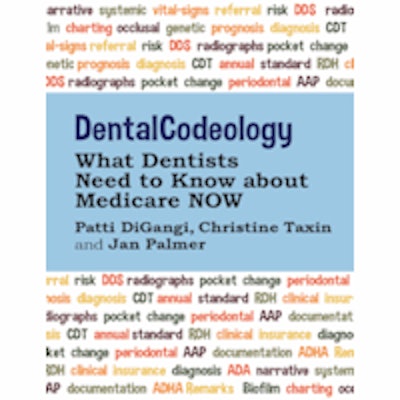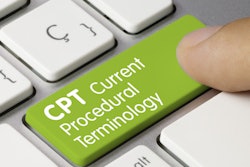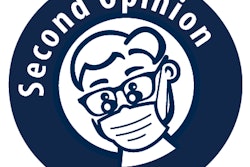
The following is an excerpt from the e-book DentalCodeology: What Dentists Need to Know About Medicare NOW, a book series on insurance coding and Medicare, by Patti DiGangi, Christine Taxin, and Jan Palmer.
Why is Medicare so important to dentists right now?
The U.S. Centers for Medicare and Medicaid Services (CMS) covers more than 100 million people. Some of them are your patients. In May 2014, a final rule was published by CMS that requires all physicians and eligible professionals -- including dentists -- who prescribe Part D-covered drugs to be enrolled in Medicare or opt out for those prescriptions to be covered under Medicare Part D.
Dentists defined as physician/practitioner
In 2013, CMS redefined the term "Physician/Practitioner":
3044.4 - Definition of Physician/Practitioner. For purposes of this provision, the term "physician" is limited to doctors of medicine; doctors of osteopathy; doctors of dental surgery or of dental medicine; doctors of podiatric medicine; and doctors of optometry who are legally authorized to practice dentistry, podiatry, optometry, medicine, or surgery by the State in which such function or action is performed. No other physicians may opt-out. Also, for a purpose of this provision, the term "practitioner" means any of the following to the extent that they are legally authorized to practice by the State and otherwise meet Medicare requirements: physician assistant, nurse practitioner, clinical nurse specialist, certified registered nurse.
 DentalCodeology: What Dentists Need to Know About Medicare NOW by Patti DiGangi, Christine Taxin, and Jan Palmer.
DentalCodeology: What Dentists Need to Know About Medicare NOW by Patti DiGangi, Christine Taxin, and Jan Palmer.Congratulations dentists! You are now included as providers within the scope of your license as medical providers for certain services. For you to benefit from this opportunity, you need to notify Medicare of your intention. As a dentist, you have a National Provider Identification (NPI) number, which means Medicare knows you exist.
What this means is if you prescribe medication, perform biopsies that require pathology lab analysis, or even simply need to refer a Medicare-eligible patient to a specialist, you have to make a choice, even if that choice is to opt out.
By signing an affidavit opting out of the program, dentists are out of Medicare for two years and cannot receive any direct or indirect Medicare payment for services provided to Medicare patients. This can have far-reaching ramifications as we explain in great detail in the e-book. This is not something to be ignored.
Medicare vs. Medicaid
Medicare and Medicaid are both government-sponsored programs designed to help cover healthcare costs. Because the programs have similar names, people are often confused about how the programs work and what coverage they offer. They are different programs. Some people are covered under both.
Medicaid is geared toward people with low incomes, but eligibility also depends on meeting other requirements based on age, pregnancy status, disability status, other assets, and citizenship. Each state sets its own Medicaid eligibility guidelines.
Medicare is the federal health insurance program that pays for hospital and medical care for elderly and certain disabled Americans.
 This Venn diagram illustrates the characteristics of Medicare and Medicaid eligibility.
This Venn diagram illustrates the characteristics of Medicare and Medicaid eligibility.Your patients covered under Medicare
By now, most of us have heard the statistics that every single day starting January 1, 2011, 10,000 Americans turn age 65.That pattern will continue through 2030. This means many patients we have served in the past will start asking: "Will Medicare cover it?" The answer to this question is not as simple as you think. The generalities for those with Medicare coverage are as follows:
Older than age 65: All people age 65 and older, regardless of their income or medical history are eligible for Medicare. Most people age 65 and older are entitled to Medicare Part A if they or their spouse is eligible for Social Security payments and have made payroll tax contributions for 10 or more years.
Younger than age 65: In 1972, the Medicare program was expanded to include people younger than age 65 with permanent disabilities and those with end-stage renal disease or Lou Gehrig's disease.
Each provider must choose
Some practitioners have registered for Medicare in the past and wonder, "Do I need to do something further?" The answer is yes. If you have previously filled an 855i application and received a Provider Transaction Access Number (PTAN), don't be fooled, you still have some work to do to make sure your PTAN is active.
Why? If you do not submit a claim to Medicare in 12 months, your PTAN will become inactive. You will not be recognized as an active provider, which could potentially be the same as the choice to "Do nothing." Even if you have submitted a claim in the past 12 months, every two years, you must revalidate with Medicare. Failure to do this will lead to an inactive status. Be sure to check and verify.
How do you find out if your PTAN is active in the CMS system? Go to the interactive Part B Medicare Jurisdiction Map and hover over your state to see which contractor you should contact. When you contact the contractor, you will need to have the following:
- Your individual National Provider Number (NPI)
- Your PTAN
- The last five digits of your Tax Identification Number (TIN), also called an Employer Identification Number (EIN)
The contractor will check for you. You can also log into the Provider Enrollment Chain and Ownership System (PECOS) to check the status of your PTAN(s). The same rules apply for durable medical equipment (DME) and cone-beam tomography (CT) PTANs. You need to verify with your organizational PTAN, NPI, and the last five digits of the associated EIN/TIN.
Confused?
Detailed information is available in the complete e-book which is available here.
Patti DiGangi, RDH, holds a publishing and speaking license with the American Dental Association for Current Dental Terminology and SNODENT diagnostic coding. She is an American Dental Association Evidence Based Champion.
Christine Taxin has extensive training and experience in both dental and medical coding based on her roles as the administrator of a critical care department at Mt. Sinai Hospital and management of a comprehensive multispecialty dental practice.
Jan Palmer trains dental offices in the administrative aspects and requirements of treating the medical condition obstructive sleep apnea in the dental office with oral appliance therapy.
The comments and observations expressed herein do not necessarily reflect the opinions of DrBicuspid.com, nor should they be construed as an endorsement or admonishment of any particular idea, vendor, or organization.


















